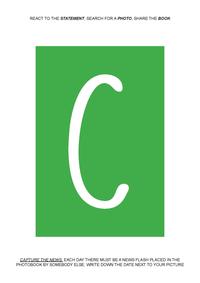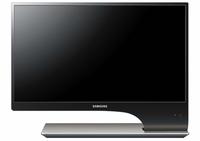Three Photo Dummies: Difference between revisions
No edit summary |
No edit summary |
||
| (5 intermediate revisions by the same user not shown) | |||
| Line 1: | Line 1: | ||
'''Photobook - Brainstorm/ Concept ideas - 1 February 2015''' | |||
''' | |||
A photobook is a fixed and a finish project/product of someone’s photo work. Could be photos from someone else, or you own photos. How can I make this ‘''open''’ and ‘''free''’ of a finish product? It’s easy to lose to author of the book, just don’t mention them. But to share a book, and ensure that it does not end up on a bookshelf, is the question. I what the book to become a movement, like my research in art. The book changes over time, and there will be never an end product. There will be a beginning but not an end. | A photobook is a fixed and a finish project/product of someone’s photo work. Could be photos from someone else, or you own photos. How can I make this ‘''open''’ and ‘''free''’ of a finish product? It’s easy to lose to author of the book, just don’t mention them. But to share a book, and ensure that it does not end up on a bookshelf, is the question. I what the book to become a movement, like my research in art. The book changes over time, and there will be never an end product. There will be a beginning but not an end. | ||
<center>''"You need the reader to create the book"''</center> | <center>''"You need the reader to create the book"''</center> | ||
| Line 27: | Line 25: | ||
So to get to this goal is hard to say now. So let’s experiment with different kind of forms and rules for the book. Start with very precise, structured rules, and at the other end almost no rules. To see what happens to the book and if the reader want to get involved. Let’s give them different kind of rules but with the same kind of frame, the photobook. Because I have a lot of goals and rules, I present them now apart. Each goal a different book, for now to research what is the best way to present my statement. The first versions I want back, so I can reflect on them. | So to get to this goal is hard to say now. So let’s experiment with different kind of forms and rules for the book. Start with very precise, structured rules, and at the other end almost no rules. To see what happens to the book and if the reader want to get involved. Let’s give them different kind of rules but with the same kind of frame, the photobook. Because I have a lot of goals and rules, I present them now apart. Each goal a different book, for now to research what is the best way to present my statement. The first versions I want back, so I can reflect on them. | ||
To best way to invite people to contribute is maybe to start with a problem statement and see if they can solve them or response to it. So | To best way to invite people to contribute is maybe to start with a problem statement and see if they can solve them or response to it. So every version gets a problem statement and the reader have to react to it. Like the website ‘''Learn to Love you More’'', I start with a precise problem statement, more an assignment. | ||
| Line 62: | Line 60: | ||
''Reference:'' | ''Reference:'' | ||
De Ramp – Was a Dutch book with a lot of collaborations without authors names. | De Ramp – Was a Dutch book with a lot of collaborations without authors names. | ||
| Line 77: | Line 76: | ||
• A book about the chosen category of the ‘The Dutch Photobook’ | • A book about the chosen category of the ‘The Dutch Photobook’ | ||
• A book where you don’t use your own pictures, so other pictures.'' | • A book where you don’t use your own pictures, so other pictures.'' | ||
[[File:Research.pdf|200px|thumb|Research]] | |||
[[File:Black_Mirror.pdf|200px|thumb|Black Mirror]] | |||
[[File:Rietveld.pdf|200px|thumb|Rietveld]] | |||
Latest revision as of 18:13, 1 February 2015
Photobook - Brainstorm/ Concept ideas - 1 February 2015
A photobook is a fixed and a finish project/product of someone’s photo work. Could be photos from someone else, or you own photos. How can I make this ‘open’ and ‘free’ of a finish product? It’s easy to lose to author of the book, just don’t mention them. But to share a book, and ensure that it does not end up on a bookshelf, is the question. I what the book to become a movement, like my research in art. The book changes over time, and there will be never an end product. There will be a beginning but not an end.
An idea is to create a book as a gift, so it will be on the move. A gift that you past on, when you are done with it. You will leave something behind in the book and then you will past it on to the next person. (Like a picture or a text)
Another idea is to create a kind of ‘newspaper’-like magazine with photos on each side of the spread. So when you fold it up you create another image. You are the director of the book, because the order of the book is in your hands. You can place certain pictures next to each other what you think is interesting. So there is also no end product, because everybody can change it. Maybe leave some blank pages so you are free to place photos yourself. Like an ‘open’ photobook.
When I think about my own research I think about the rules that I created for an artwork. Can I create does rules for a book? Put the rules on the cover, like the tile, and let the inside be empty. So when you receive this book, you have to follow the title/rules, and ‘play’ with does empty pages.
The rules are like: This photobook is empty or with a starting page You are free to fill it up, so you can create your own photobook But there is one important rule, you have to past in on to somebody else. So leave room in the photobook for the next persons how will receive it. You need each other to create the photobook. Share the photobook Don’t put it on you bookshelf, but past it on The book changes over time. The book is never done, the is no end product. There are no author names involved or rights
My goal is clear, the book has to make by the reader and can only exist if there are more people involved with the book. There are only photos allowed in it. The reader makes the choices, what he was to contribute to the photobook. The book is just a ‘Frame’ here you work in. It’s a different kind of approach to the photobook itself. De viewer creates the photobook.
So to get to this goal is hard to say now. So let’s experiment with different kind of forms and rules for the book. Start with very precise, structured rules, and at the other end almost no rules. To see what happens to the book and if the reader want to get involved. Let’s give them different kind of rules but with the same kind of frame, the photobook. Because I have a lot of goals and rules, I present them now apart. Each goal a different book, for now to research what is the best way to present my statement. The first versions I want back, so I can reflect on them.
To best way to invite people to contribute is maybe to start with a problem statement and see if they can solve them or response to it. So every version gets a problem statement and the reader have to react to it. Like the website ‘Learn to Love you More’, I start with a precise problem statement, more an assignment.
THE RULES FOR EVERY BOOK ARE: REACT TO THE STATEMENT, SEARCH FOR A PHOTO, SHARE THE BOOK
1. Capture the news. Each day there must be a news flash placed in the photobook by somebody else. Write down the date next to your picture.
2. Best Phone - Photo. Place one of your best phone photo in the photobook, and passed it to someone to do the same.
3. No Author Photobook. Place a photo in the book without any authorship. That belongs to no one. Are you done? Pass it on to somebody else.
4. Shared Photobook. Contribute a picture to the photobook and share it with somebody who you don’t know.
5. First Photo. React on the last photo in the photobook with another photo. Pass it on to the next person when you are done.
6. Food Photo. Make a picture of your food of a hole day and place them in the photo cook-book. Is the day finished? Pass it on to the next family member.
7. Your photobook for one week. This is your photobook for one week. After the week you have to give it away
8. Friend book. Make a picture of you friend and place it in the photobook. Give this book to your captured friend and ask if she/he will do the same, exempt you can’t give it back.
9. Open Photo Book. Place a photo in the book, and give it to somebody who would like to see it.
10. Photo book without Rights. Place a photo without any rights
11. FREE. You are free to contribute to the photobook, in one condition it as to be a photo.
At some point the book will be full and end? NO, it never ends. At the last page is another rule.
- Change one page in this book.
- Take a photo out of the book and replace it with another photo
And so on, so on …
Reference:
De Ramp – Was a Dutch book with a lot of collaborations without authors names.
Anouk Kruithof – Has really nice different lay-out of books, very playful ways.
Martine Stig – Mr. Wood, a book about how to make a photobook, like a script
Miranda Julie – Learn to love you more, book version
Herman Cake – the famous cake
Assignment
• A book based on you own research
• A book about the chosen category of the ‘The Dutch Photobook’
• A book where you don’t use your own pictures, so other pictures.



